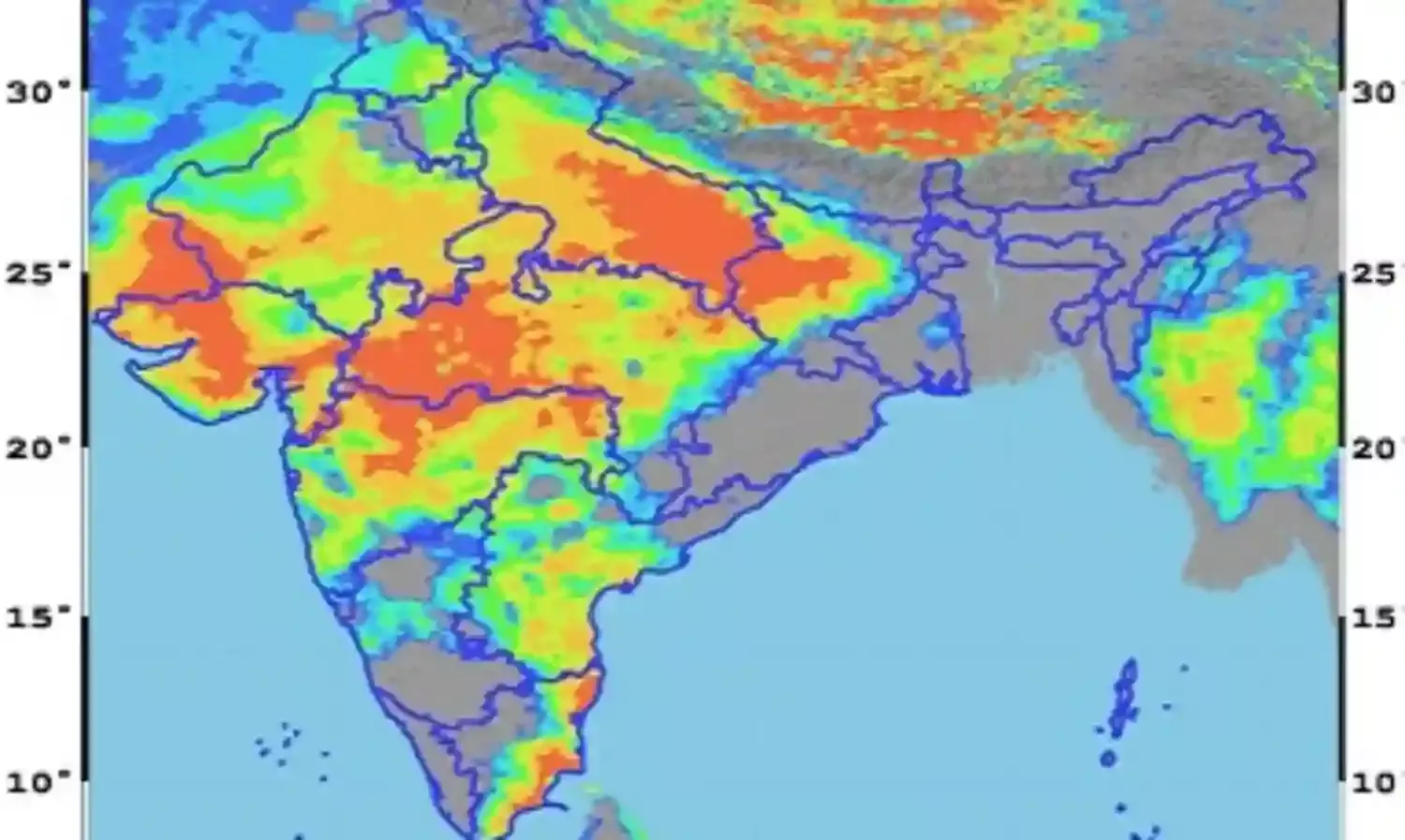Not Just Villages, Big Cities Run Dry
Chennai, Delhi, Hyderabad, Bengaluru have no water

NEW DELHI: Large parts of India are under severe drought this year. Visualisation (below) is based on data from Remote Sensing Environment and Disaster (RSED) - University of Tokyo, shows the progression of the 2019 drought in India.
As per the latest data recorded on June 18 using satellite-based drought monitoring and early warning system, the following map was created to indicate drought like conditions in India.
Orange to red tones indicates severe drought-like conditions.
Metro cities viz. Delhi, Bengaluru, Chennai, Gurgaon and Hyderabad are facing brunt of acute water supplies.
Speaking to The Citizen, Jayaram Venkatesan, an activist based in Chennai said, “Ground water situation has worsened in Chennai. SP Velumani, Minister for Municipal Administration, Rural Development and Implementation of Special Programme, Tamil Nadu claims that 525 Millions of Litres per Day (MLD) is being supplied but situation on ground is different. People in the city are getting only 3 to 4 buckets of water per day, translating into 220-230 MLD. Why is Minister hiding that there's shortage of water in the city?”
Venkatesan further added, “Hostels are getting closed due to shortage in water supplies. Many schools in Chennai have declared half day or are working every alternate days.”
Talking about water supply in the city, he said, “In Chennai, water tankers of Municipal Corporation comes once in 25 days and charges Rs.700/- whereas private water tankers are coming every 4-5 days to supply water and they charge Rs. 6000. The situation is worse in suburbs of the city. Water is being supplied every 5 to 7 days. There is a continuous negligence of the government and the water that is available is not equitably shared amongst the population.”
Water situation in Hyderabad is also getting worse with rising temperatures. People in many parts of Hyderabad are getting water only on alternate days.
Four major water reservoirs viz. Singanoor, Manjira, Osmansagar and Himayatsagar are running dry which are the major sources of water to meet the drinking needs of Hyderabad and its surrounding areas.
Reservoirs under Godavari basin are also drying up fast with the depletion of water levels. Water availability in these reservoirs is reported be at 20 per cent of the total capacity.
As per the local media reports, “There is no water supply in the buildings located near Wipro Technologies. Around 4000 families reside in these buildings.”
In an interview given to rediff.com, Rajendra Singh also known as 'Water Man of India' said, “Cities are facing an acute shortage of water and in smaller towns tankers are lining up to provide water. The situation is much worse in the villages, where more and more people migrate to the cities in search of water.”
“In Nagpur, today, we have Veolia India, a French company which is providing water... Veolia India now wants to supply water in 18 cities of India. Soon, they will capture the country's water.”
Talking about water crisis in Maharashtra, he said, “Today, in Maharashtra, to do sugarcane farming 84 per cent of the water is being taken out from the ground. Is there anything more dangerous than this? Politicians of our country don't have any vision for water. The only vision they have is how to get votes in the name of water. The politicians only think of solving the water issue through private contractors. These private contractors can never find a solution to the water problem.”
On ways to tackle ground water crisis in India, Rajendra Singh said, “When it rains on the mountains it has to be stopped there and the water needs to be put into underground aquifers so there won't be soil erosion. There will be moisture in the soil due to which there will be greenery. That soil will not silt and accumulate into the river.”
He adds, “In India, there are simultaneous floods and droughts because we do not control the flow of rainwater. When water flows with great speed, there is erosion of soil. The place where there is no soil is hit by drought, like in Marathwada. In places where there is soil, it erodes and accumulates into the rivers. So the rivers start overflowing, resulting in floods. If we want to stop floods and drought in India, we have to control the flow of rain water. To make India flood-free, we have to slow the water flow. We need to make sure that water walks and when that water walks and then make it crawl. When it starts crawling, put that water in the belly of the Earth.”



